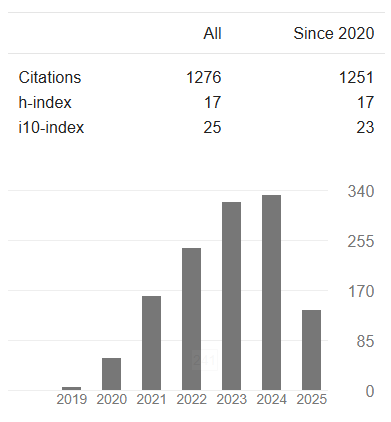Understanding of Accounting and Gender on Financial Literation Levels
DOI:
https://doi.org/10.14421/EkBis.2021.5.2.1288Keywords:
Understanding of Accounting, Gender, Financial LiteracyAbstract
This study aims to analyze the effect of understanding accounting and gender on the level of financial literacy of postgraduate students in the economic education program at Surabaya State University. This research uses a quantitative approach. The study showed that the level of financial literacy of postgraduate students of economic education courses at UNESA was 19.7% at the high level, 32.4% at the moderate level, and 47.9% at the low level. The level of financial literacy shows an average of 60.49, and the meaning is moderate. Accounting understanding shows an average of 70.28, and it means that the level of accounting understanding is moderate. The participation rate was 43.7% male and 56.3% female. The level of financial literacy of students in the female gender group was higher than male, female by 62.00 (62.00> 60) which means moderate, and male by 58.55 (58.55 <60) which means low. Based on data analysis, it can be concluded that accounting understanding has a significant effect on the level of financial literacy of postgraduate students in economic education programs at UNESA. Meanwhile, gender has no significant effect.Downloads
 Abstract viewed: 641 times
|
Abstract viewed: 641 times
|
 PDF downloaded = 474 times
PDF downloaded = 474 times
References
Budiraharjo, M. (Pebruari 7, 2017). Retrieved February 17, 2017, from http://www.kompasiana.com/mbudiraharjo/berpikir-strategis-apa- itu_54ff0372a33311842850fac0
Capuano, A., & Ramsay, I. (2011). What causes suboptimal financial behaviour? An exploration of financial literacy, social influences and behavioural economics.
Feng, X., Lu, B., Song, X., & Ma, S. (2019). Financial literacy and household finances: A Bayesian two-part latent variable modeling approach. Journal of Empirical Finance, 51, 119–137. https://doi.org/10.1016/j.jempfin.2019.02.002
French, D., & McKillop, D. (2016). Financial literacy and over-indebtedness in low-income households. International Review of Financial Analysis, 48, 1-11.
Hermansson, C., & Jonsson, S. (2021). The impact of financial literacy and financial interest on risk tolerance. Journal of Behavioral and Experimental Finance, 29. https://doi.org/10.1016/j.jbef.2020.100450
Huston, S. J. (2010). Measuring financial literacy. Journal of Consumer Affairs, 44(2), 296-316.
KBBI. (2000). Balai Pustaka.
Li, X. (2020). When financial literacy meets textual analysis: A conceptual review. Journal of Behavioral and Experimental Finance, 28, 100402. https://doi.org/https://doi.org/10.1016/j.jbef.2020.100402
Lusardi, A., & Mitchell, O. S. (2006). Baby boomer retirement security: The roles of planning, financial literacy, and housing wealth (No. w12585). National Bureau of Economic Research.
Lusardi, A., Mitchell, O. S., & Curto, V. (2010). Financial literacy among the young. Journal of consumer affairs, 44(2), 358-380.
Otoritas Jasa Keuangan. (2013). Developing Indonesian Financial Literacy Index. DEFINIT.Asia. http://www.definit.asia/research-project6.html
PKBI. (n.d.). Gender. Retrieved February 19, 2017 http://pkbi.or.id/?s=gender
Titko, J., Ciemleja, G., & Lace, N. (2015). Financial Literacy of Latvian Citizens: Preliminary Survey Results. Procedia-Social and Behavioral Sciences, 213, 12-17.
Udau, U. (2013). Pemahaman orang tua tentang gender dalam menerapkan pola asuh kepada anak remaja di desa Long Payau. eJournal sosiatri, 72-84
West, C., & Zimmerman, D. H. (1987). Doing gender. Gender & society, 1(2), 125-151.





























 This work is licensed under a
This work is licensed under a 